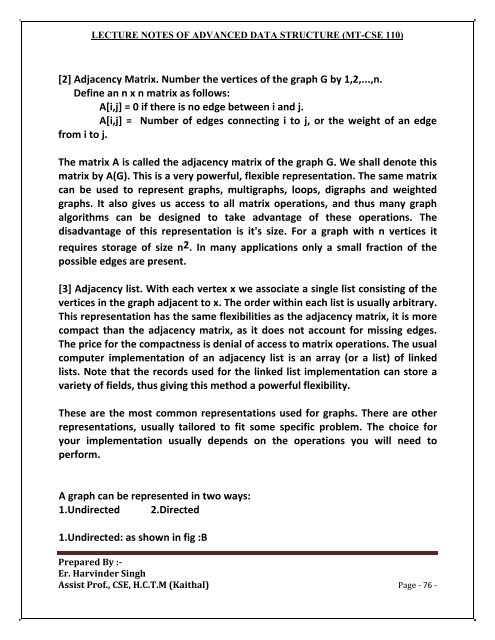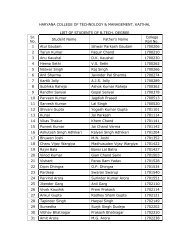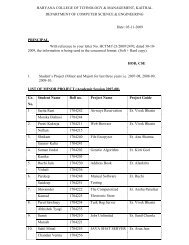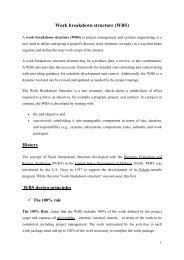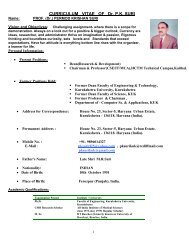Create successful ePaper yourself
Turn your PDF publications into a flip-book with our unique Google optimized e-Paper software.
LECTURE NOTES OF ADVANCED DATA STRUCTURE (MT-CSE 110)<br />
[2] Adjacency Matrix. Number the vertices of the graph G by 1,2,...,n.<br />
Define an n x n matrix as follows:<br />
A[i,j] = 0 if there is no edge between i and j.<br />
A[i,j] = Number of edges connecting i to j, or the weight of an edge<br />
from i to j.<br />
The matrix A is called the adjacency matrix of the graph G. We shall denote this<br />
matrix by A(G). This is a very powerful, flexible representation. The same matrix<br />
can be used to represent graphs, multigraphs, loops, digraphs and weighted<br />
graphs. It also gives us access to all matrix operations, and thus many graph<br />
algorithms can be designed to take advantage of these operations. The<br />
disadvantage of this representation is it's size. For a graph with n vertices it<br />
requires storage of size n2. In many applications only a small fraction of the<br />
possible edges are present.<br />
[3] Adjacency list. With each vertex x we associate a single list consisting of the<br />
vertices in the graph adjacent to x. The order within each list is usually arbitrary.<br />
This representation has the same flexibilities as the adjacency matrix, it is more<br />
compact than the adjacency matrix, as it does not account for missing edges.<br />
The price for the compactness is denial of access to matrix operations. The usual<br />
computer implementation of an adjacency list is an array (or a list) of linked<br />
lists. Note that the records used for the linked list implementation can store a<br />
variety of fields, thus giving this method a powerful flexibility.<br />
These are the most common representations used for graphs. There are other<br />
representations, usually tailored to fit some specific problem. The choice for<br />
your implementation usually depends on the operations you will need to<br />
perform.<br />
A graph can be represented in two ways:<br />
<strong>1.</strong>Undirected 2.Directed<br />
<strong>1.</strong>Undirected: as shown in fig :B<br />
Prepared By :<br />
Er. Harvinder Singh<br />
Assist Prof., CSE, H.C.T.M (Kaithal) Page ‐ 76 ‐


